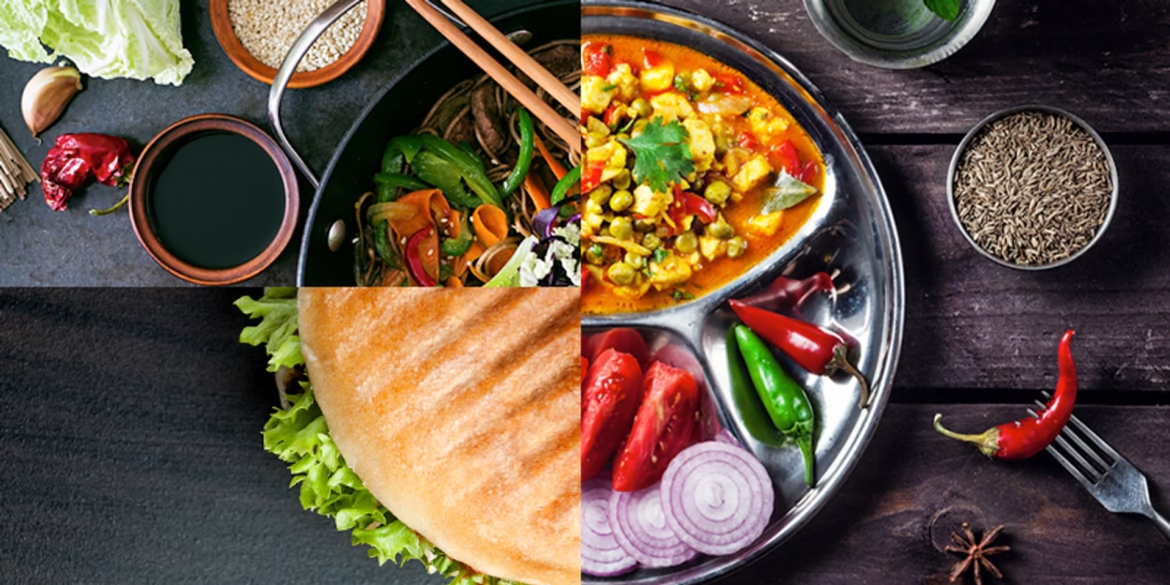Food is one of humanity’s oldest and most universal languages. It’s more than just sustenance — it’s a story told through flavors, textures, and traditions. Across the world, every culture expresses its history, emotions, and creativity through the way it cooks, eats, and celebrates. Whether it’s a home-cooked meal passed down for generations or a modern gourmet experiment, food remains a reflection of who we are and where we come from.
The Cultural Story Behind Every Bite
Every dish holds a memory. Recipes that have survived centuries are not just culinary instructions but symbols of identity and resilience. In India, for example, the complex layering of spices in a curry reflects centuries of trade and migration. In Italy, the simplicity of pasta and olive oil captures the essence of local agriculture and family tradition. Meanwhile, Japanese cuisine celebrates minimalism and balance — a harmony between flavor, texture, and presentation.
This cultural exchange through food continues to evolve. Modern dining often combines multiple influences, giving birth to exciting fusions. You might find a Korean-inspired taco or a sushi burrito on the same menu — a delicious result of globalization and creativity. These hybrid dishes show how food connects people, bridging differences through shared appreciation for taste and innovation.
The Rise of Conscious Eating
In recent years, people have become increasingly aware of how food affects not only their bodies but also the planet. Conscious eating — a mindful approach to what we consume — has become more than just a trend; it’s a movement. Consumers are now reading labels, supporting ethical farming, and reducing food waste.
Plant-based diets are becoming mainstream, not because they’re fashionable, but because they align with sustainability and health goals. People are realizing that every meal is a choice — one that can either contribute to environmental balance or deplete natural resources. From farm-to-table initiatives to organic markets, this movement is reshaping the global food industry.
Interestingly, the demand for sustainable ingredients has also influenced chefs and restaurants to innovate. Menus now highlight locally sourced produce and seasonal ingredients, bringing freshness and authenticity back to the table. This return to simplicity — knowing where your food comes from — reconnects us with nature in a powerful way.
Food as an Experience, Not Just a Necessity
Food is emotional. It evokes memories, comforts the soul, and brings people together. A cup of coffee can symbolize friendship; a festive dinner can mark milestones and love. Beyond nutrition, eating has become a multisensory experience that blends taste, aroma, and aesthetics.
Modern dining experiences often engage more than the palate. Restaurants now use lighting, music, and plating as part of the culinary story. Even the rise of “food art” on social media has made presentation a crucial part of how we experience meals. Whether it’s a Michelin-star restaurant or a cozy street vendor, food today is both art and connection.
It’s also becoming more accessible. Communities are embracing global cuisines at local levels — food trucks, pop-up restaurants, and supper clubs bring world flavors to everyday tables. This openness has created an inclusive culture of exploration where everyone can experience the diversity of world cuisine firsthand.
The Role of Food in Health and Well-Being
In addition to pleasure and culture, food plays a vital role in health. What we eat has a direct impact on our physical, mental, and emotional well-being. The rise of functional foods — ingredients that provide health benefits beyond basic nutrition — highlights the growing awareness of this connection.
For instance, fermented foods like kimchi, yogurt, and kombucha are known for their probiotic qualities that support gut health. Leafy greens, nuts, and fish provide essential nutrients that enhance brain function and energy. This holistic view of food as medicine has redefined the way we think about our diets.
However, healthy eating doesn’t mean compromising on flavor. In fact, some of the most nutritious meals are also the most delicious when prepared with creativity and care. A focus on fresh, whole ingredients helps preserve natural flavors while supporting a balanced lifestyle.
The Intersection of Food and Innovation
Technology has revolutionized the food industry. From precision farming and AI-driven recipes to food delivery apps, innovation is shaping how we grow, prepare, and enjoy food. Restaurants now use data analytics to reduce waste, while home cooks explore virtual classes to learn new techniques from chefs across the world.
Moreover, modern cooking trends encourage experimentation. Chefs and creators often draw inspiration from diverse sources — blending culinary traditions, ingredients, and even presentation styles. In many ways, the creative diversity found in spaces like urbansplatter.uk reflects this innovative energy — where ideas flow freely, and inspiration crosses boundaries between art, culture, and lifestyle.
Food blogging and content creation have also expanded the food conversation beyond the kitchen. Social media has turned cooking into a shared experience, with millions exploring recipes, reviews, and stories that celebrate the beauty of everyday dining.
Comfort Food and Emotional Connection
No matter how much the world changes, comfort food remains timeless. It’s the dish that brings you peace after a long day or nostalgia when you’re far from home. Whether it’s a bowl of soup, a piece of freshly baked bread, or a family dessert recipe, comfort food reminds us that eating is an emotional act.
This emotional link explains why certain dishes hold special meaning for individuals and families. For many, the taste of home-cooked food can transport them back to childhood memories. Food provides a sense of belonging — it’s a reminder of love, care, and shared moments around the table.
Even in the fast-paced modern world, where takeout and technology dominate, people continue to seek that personal connection with what they eat. Cooking at home, experimenting with recipes, or sharing meals with friends brings a sense of grounding and joy.
Global Influence and Culinary Diversity
Food has always been an ambassador of culture. Every country adds its own story to the world’s menu, creating a delicious mosaic of tastes. Italian pizza, Mexican tacos, Thai curries, and French pastries — each tells a different story of place, history, and people.
Globalization has made these cuisines easily accessible, encouraging curiosity and appreciation. Yet, it’s also important to respect authenticity. While modern chefs reinterpret classic recipes, understanding the roots of each dish keeps culinary heritage alive.
Fusion cuisine, in particular, thrives on creativity while honoring tradition. The ability to blend flavors, techniques, and ingredients from around the world reflects how interconnected our societies have become. You might encounter a dish that perfectly merges Mediterranean spices with Asian-inspired sauces — a sign of culinary evolution in real time.
This exploration of diverse tastes mirrors how people today view food: as a universal form of expression and connection. The way ingredients interact, much like cultures, creates harmony that transcends language and geography. That spirit of experimentation and authenticity continues to define what’s celebrated in spaces dedicated to culinary inspiration, where global and local ideas merge in delicious ways.
The Future of Food
As we look ahead, food will continue to shape and be shaped by society. Climate change, population growth, and technological advances will all influence how we produce and consume what’s on our plates. Sustainable farming, plant-based innovation, and lab-grown meat are not futuristic fantasies anymore — they’re real solutions to global food challenges.
Education will also play a key role. Teaching younger generations about nutrition, sustainability, and culinary creativity will ensure that food remains both a source of joy and responsibility. The future of food isn’t just about innovation — it’s about balance. It’s about feeding both the body and the soul while protecting the planet we depend on.
Conclusion
Food tells stories, bridges cultures, and shapes the way we live. It connects memory with creativity, heritage with innovation. From the comfort of traditional recipes to the thrill of global fusion, food continues to evolve — reminding us that nourishment goes far beyond taste. It’s a celebration of life itself, served one meal at a time.











